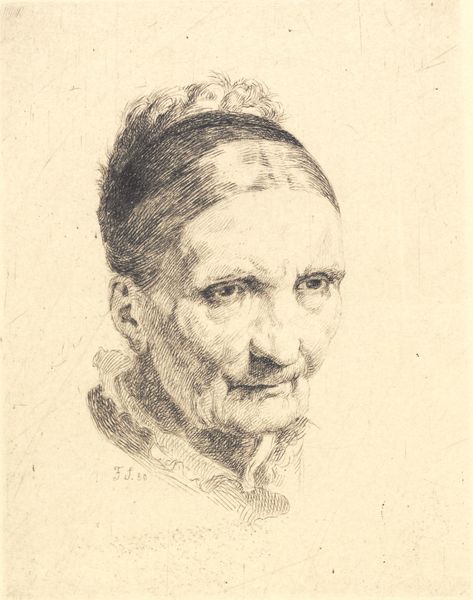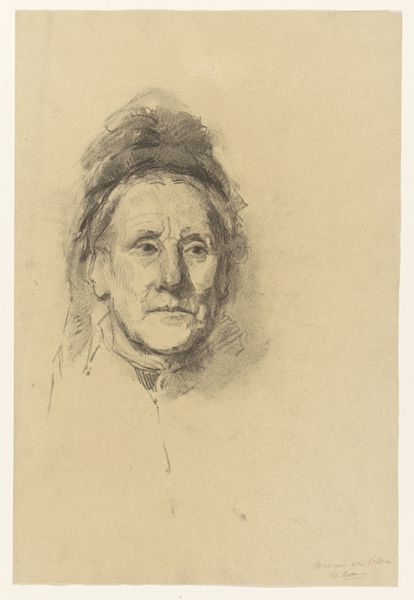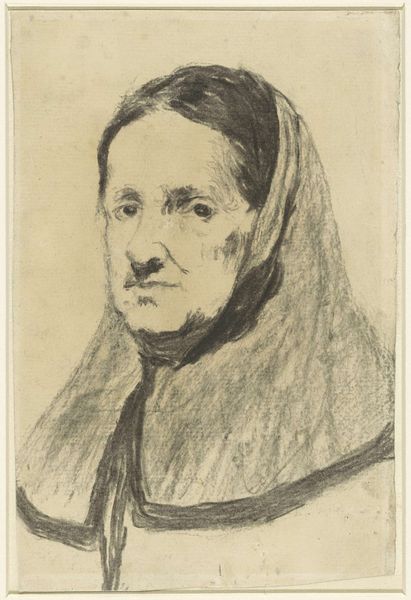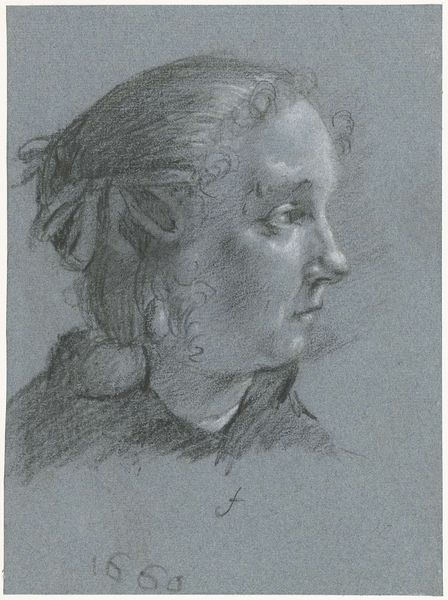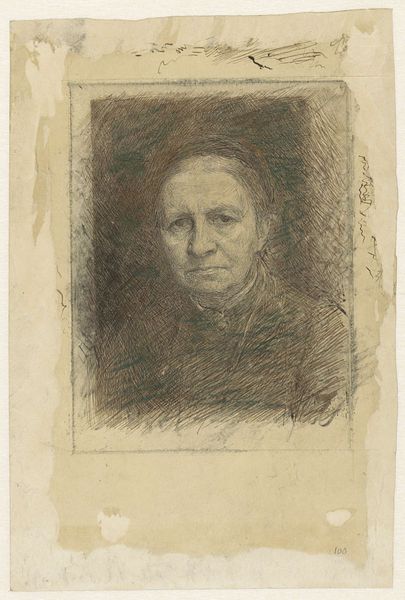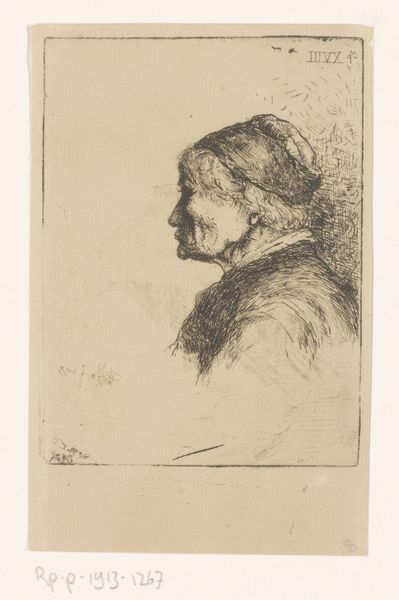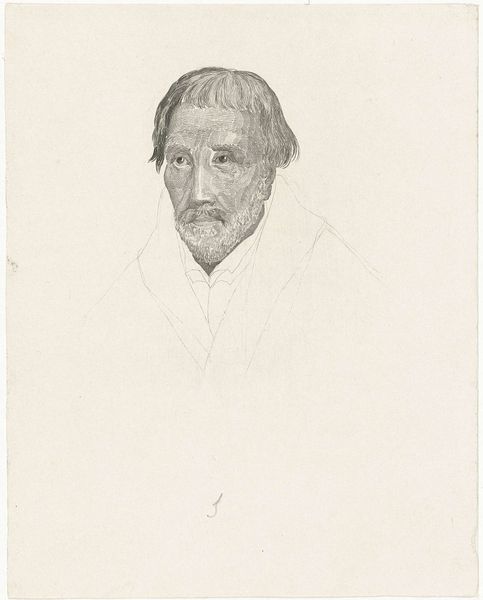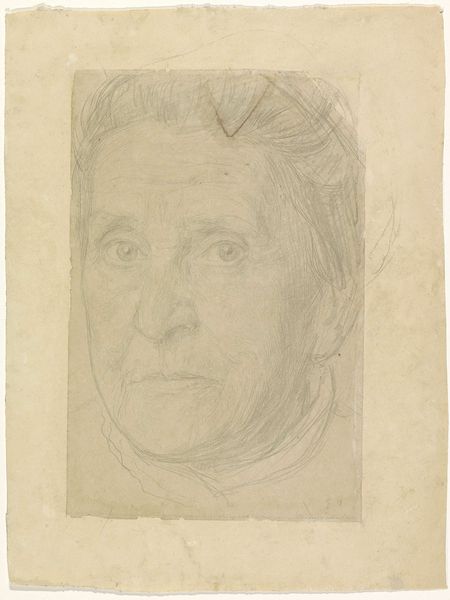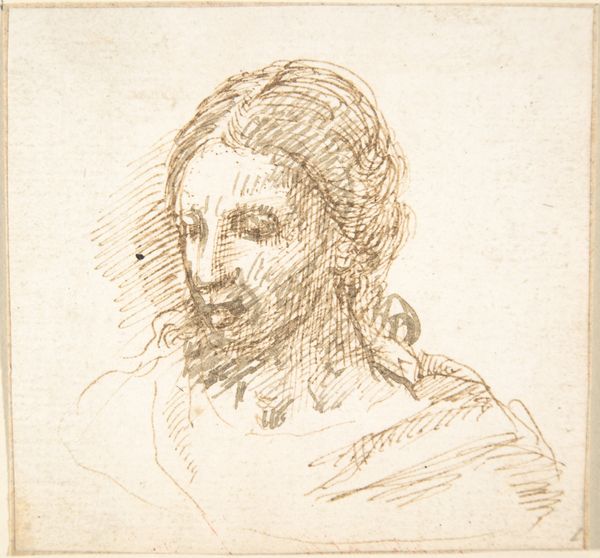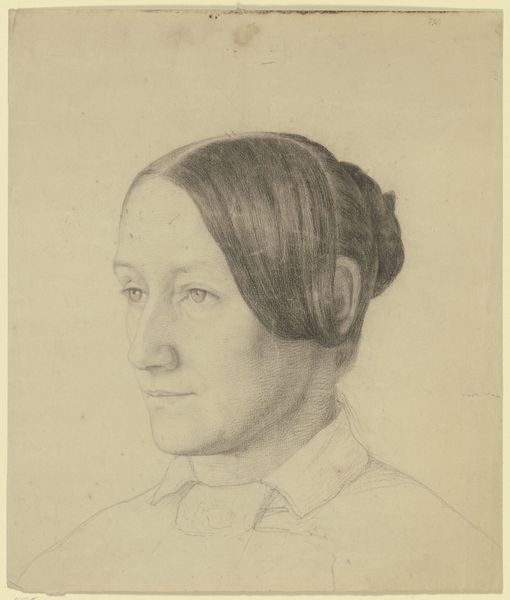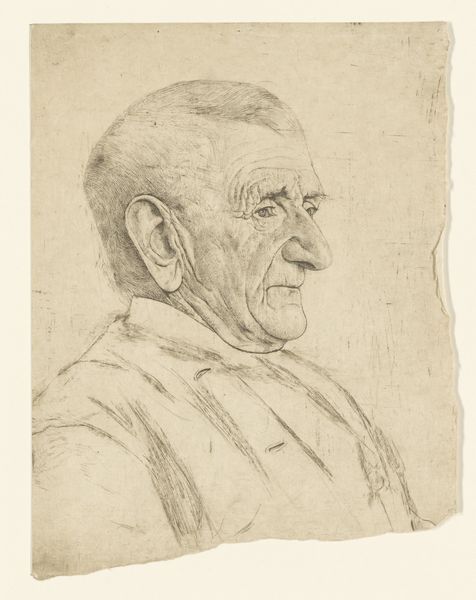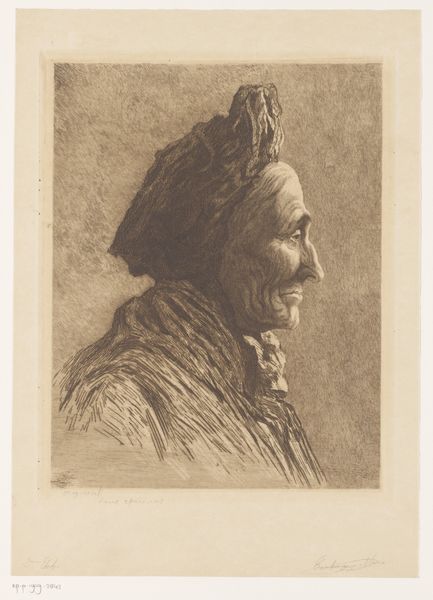
drawing, print, etching
#
portrait
#
drawing
# print
#
etching
#
portrait drawing
#
realism
Dimensions: 100 mm (height) x 78 mm (width) (plademaal)
Editor: Here we have Frans Schwartz’s 1880 etching, "Hoved af en gammel kone, Madam Rasmussen," or "Head of an old woman, Madam Rasmussen." The fine lines create a delicate, almost fragile portrait. What do you see in this piece? Curator: I see a powerful statement about aging and representation within the patriarchal structures of 19th-century art. While it presents as a "realistic" portrait, it begs the question: whose gaze are we viewing Madam Rasmussen through? Consider the limited roles afforded to women, especially older women, during this period. Was Schwartz attempting to humanize her, or was he simply perpetuating societal stereotypes? Editor: That’s a great point! I hadn’t considered the artist’s potential bias. Do you think the etching medium itself contributes to this interpretation? Curator: Absolutely. Etching, with its fine lines and capacity for detail, could be seen as a metaphor for the meticulous scrutiny women faced. Every wrinkle, every perceived flaw is captured and displayed. But, the etching medium also suggests ideas of reproduction and dissemination: was she reproduced as an artistic model, and therefore stripped from her own life, to exist in someone else's story? Editor: So, beyond just a portrait of an individual, it’s reflecting larger social and gender dynamics? Curator: Precisely. It challenges us to consider the power dynamics inherent in portraiture and to actively question whose stories are being told, and how. What does seeing her invite *you* to do? Editor: It really makes you think about the narratives we often overlook and the importance of diverse representation. Curator: Indeed. Art like this compels us to critically engage with the past, not just observe it. It reminds us how representation reinforces or challenges power.
Comments
No comments
Be the first to comment and join the conversation on the ultimate creative platform.
